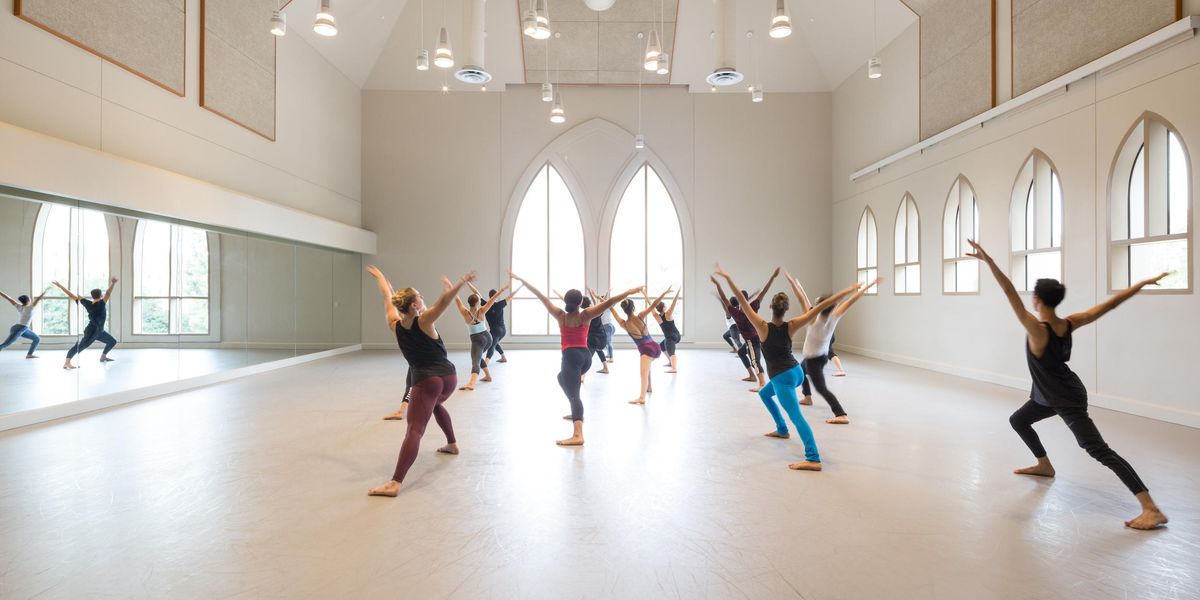Your Body: Weight Shift
Traditional kettlebells can build core strength.
Amy O’Neal detonates across the stage. Because her choreography requires fearless momentum, O’Neal, a Seattle dancemaker (see “Why I Choreograph”), trains three times a week with kettlebells, an old-school weight system. Since she began, she has seen a reduction in pain and overuse injuries, while her dancing has taken on new energy. “I noticed my gluteus and core were stronger, which allows me to move more freely,” she says.
Weight training has long been an excellent form of cross-training. Enter kettlebells, bell-shaped weights that come with a handle, so the weight dangles from your hand. They owe their effectiveness to the way they shift the center of gravity below your grip. First mentioned in the 1700s in a Russian dictionary, kettlebells became popular in the U.S. in the early 1900s during the physical culture movement, which encouraged outdoor exercise. They fell out of fashion but returned to the spotlight when trainer Pavel Tsatsouline reintroduced them to the U.S. a decade ago with his Russian Kettlebell Challenge.
Whole-body motion is what distinguishes kettlebell training from other forms of weight training. Because the weight actually hangs from your hand, it’s harder to manage, which calls on core muscles to help exercisers stabilize. You don’t merely lift and lower but swing the kettlebell, which recruits the core and hip muscles.
Eric Pranzarone, a certified kettlebell trainer in Seattle, Washington, often works with dancers. “The hips are the engine of the body in dance, and the key to power and strength,” he says. “With kettlebells, the center of mass is past your grip, so you have to use a different kind of leverage. It’s much harder than working with free weights, which is why it builds such functional strength.”
If you are going to use kettlebells, Pranzarone recommends expert instruction at your local gym to prevent injury. Here are two kettlebell exercises that he recommends.
Front Squat
:
Hold the kettlebell close
to your chest with both hands, connecting your lats and pecs while maintaining a tall spine and neutral pelvis, and brace your core with a deep, diaphragmatic inhalation. Keep your feet flat on the floor and the kettlebell in front of your chest. • Perform a Graham-like contraction to set your core posture before pulling yourself down, bringing your hips below your knees. • Maintain an upright posture throughout. • Pause, then push the floor away from you with a forceful but smooth exhalation until you are standing tall again.
Kettlebell Swing
:
Stand with your feet
shoulder-width apart in a relaxed parallel position, and with a kettlebell on the floor slightly in front of your feet. • Bend your knees and reach for the kettle bell with both hands. It’s key for safety to prevent any flexion in your lumbar spine. • Deeply inhale, firmly grasp the handle of the kettlebell with both hands, and swing the weight back between your legs while continuing to sit deeply into your hips with your knees bent. Maintain a long spine. • The pelvis initiates the upward movement by thrusting forward as you push your feet into the floor to stand up. • As you stand tall, the kettlebell will swing forward. • Continue to stand tall as the weight swings back down, and then send your hips back and repeat the thrust to stand tall to swing the bell forward again.
Nancy Wozny writes about health and the arts from Houston.
Time to Thrive
Vegans need energy bars too. Finally, there’s one designed for high-performance athletes like dancers. The Vega Vibrancy bar was concocted by Brendan Brazier, author of The Thrive Diet. It boasts 10g of raw protein, 5g of dietary fiber, 17g of sprouts. And it’s rich in enzymes, phytonutrients, and 4g of omega-3 and essential fatty acids. Flavors are Chocolate Decadence, Green Synergy, and Wholesome Original. The bars digest quickly, so you get the energy boost right away. Bars cost $2.99, and you can order a box from www.myvega.com.
Don’t Stop the Music
Neuroscientists and exercise physiologists keep probing the link between exercise and music. A recent study conducted at the Research Institute for Sport and Exercise Sciences in Liverpool determined that music can improve the length and intensity of performance. The study shows that listening to a faster tempo will keep your workout focused while amping up your heart. So, if you’re feeling tired after a long day of rehearsals and need some quick performance energy, plug into your favorite up-tempo songs for a few minutes before you go on.




